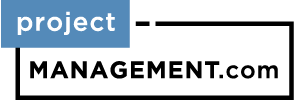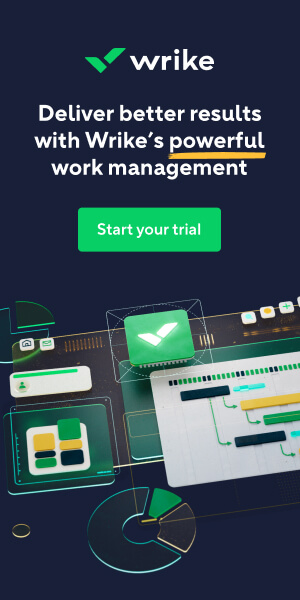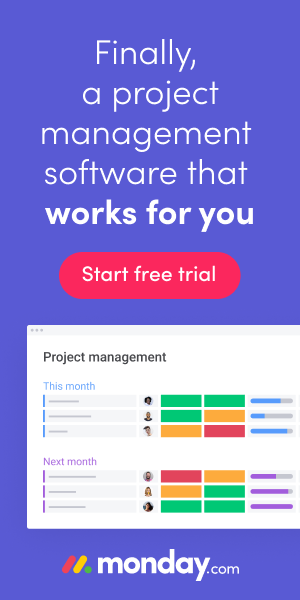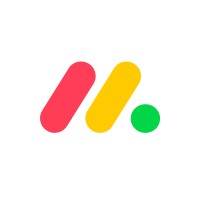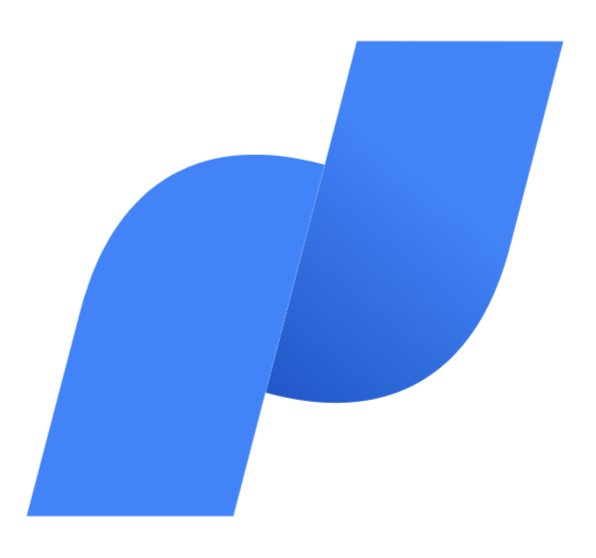Featured Partners: Project Management Software
Open source software brings several advantages to businesses. Open source project management software gives users the flexibility to solve different technology or process problems. Users can also start immediately and proceed at their own pace. If your organization is interested in adopting an open source project management tool, these tools merit your consideration.
Read more: Best Management Software & Tools for 2023
Table of Contents
- What Is Open Source Project Management Software?
- What Is The Best Open Source Project Management Software?
- Types of Open Source Project Management Software
- Open Source PM Software Features
What Is Open Source Project Management Software?
Open source project management software’s source code is open for anyone to inspect, modify, and enhance, subject to the publication license.
With its code openly available, an open source PM tool allows users to change parts of the software to improve usability or enhance its capabilities at no cost. In addition, the software’s inherent transparency promotes the principles of open exchange, collaboration, and community participation.
What Is The Best Open Source Project Management Software?
The development, testing, use, and code reviews for open source project management tools involves a community of users ensuring its usability and security. The best open source project management software for you greatly depends on the size, scope and budget of your project or company. The following list is our top picks for open source PM software, in no particular order.
Taiga.io
Taiga is open source project management software for agile teams. Organizations across industries like software development, telecommunication, education, and manufacturing use the software for project management. The software supports teams that work across Scrum and Kanban frameworks.
Taiga provides a project planning tool where users can define, align, and prioritize deliverables. It supports team interaction and collaboration, as well as providing visibility and insight with dashboards and reports. Other features include integrated issue tracking, customization, and various integrations.
Taiga being open source ensures quality, reliability, flexibility, and security. The basic edition is free, while the premium cloud edition includes unlimited projects and users, larger storage per project, and premium support. An on-premise edition, either self-hosted or managed by the provider, is also available.

Pros
- Support for multiple project methodologies
- Easy project and bug tracking
- Well designed and easy-to-use interface
Cons
- Limited resource management features
- Users wish for a native mobile app
OpenProject
OpenProject provides users a tool they can use for classic, agile, or hybrid open source project management. With open source license under GNU GPL v3, the project management software gives users the freedom to run, share, study, and modify it with flexibility. Users can install the software on-premise within their infrastructure and have full control and ownership of their data.
OpenProject includes task management for easy work tracking. Users can organize, prioritize, and assign tasks. All tasks and communication are housed together in one place for easy updating of project progress. This web-based project management tool provides access and easy sharing of information to all team members.
It also has project planning and scheduling, project portfolio management, time tracking, and custom workflows. Aside from the community edition, a self-hosted on-premise edition and an OpenProject-hosted cloud edition are available, with advanced capabilities like agile boards, SSO, intelligent workflows, and additional security features.

Pros
- Ease of use
- Flexible deployment
- Task management and dependencies
Cons
- Users notice occasional bugs
- Limited budget management capabilities
Orangescrum
Orangescrum is a simple open source project management and task management software for teams. It enables users to organize all information in one place with clarity on progress. A team can assign, manage, and evaluate the progress of all their tasks. It has subtasks, groups, sprints, Kanban and Scrum boards, custom labels and types, and task linking.
Orangescrum also has user role management, a built-in time tracker, a resource utilization tool, Gantt charts, project templates, and reports. Users can install the open source PM software by downloading the community edition. They can also choose the cloud edition, which has tiered plans depending on the number of users.
Another option is to install the self-hosted on-premise plan, where users receive the source code, have access to unlimited projects, tasks, time logs, and all other premium features, as well as getting free updates for the first 12 months and priority support.

Pros
- Ease of setup and use
- Responsive support
- Intuitive task assignment and management
Cons
- Users wish for more drag-and-drop capabilities
- Some features are only available in higher tiered plans
Leantime
Leantime is an open source project management system for small teams and startups. The software provides tools for idea management, strategy development, roadmap planning, and task management. The software also includes an idea manager that enables users to store ideas, communicate them with team members, and move from idea to validation.
Leantime also has planning tools with roadmaps for tracking milestones, calendars for setting meetings and timelines, and backlog for breaking tasks into smaller subtasks. Other features are report screens, project dashboards, a timesheet manager, to-do lists, white labeling, and multiple user roles. The latest version of the open source tool is downloadable from its site.

Pros
- Adaptable user interface
- Integrated timesheet tool
- Effort estimation report
Cons
- Users wish for more frequent updates
- No available mobile app
ProjectLibre
ProjectLibre is an open source project management alternative to Microsoft Project. It provides a similar interface and features, so a project manager can easily transition to the software. The project management tool is compatible with Microsoft Project files and can run on Windows, macOS, and Linux. It has Gantt charts, network diagrams, WBS, earned value costing, and resource histograms.
ProjectLibre community edition is an open source desktop tool. However, a cloud app that users can open with a browser is currently in beta. The cloud version extends the capabilities of the open source software to allow access anytime, anywhere. It is a team solution that supports collaboration and multi-project management. With role-based access, users can manage their project portfolios safely.

Pros
- Easy to set up
- Clear and familiar user interface
- Complete MS Project file compatibility
Cons
- Users wish for more print functions
- Fewer features than MS Project
Tuleap
Tuleap is an all-in-one open source project management and software development tool for Agile and DevOps teams. It increases the collaboration of multi-functional teams so they can continuously deliver valuable and compliant software. It offers on-premises and cloud deployments.
On-premise installation offers flexibility; users can host and maintain or host only and let the provider maintain and support them. Tiered cloud plans also offer users a choice of different services like support, disaster recovery, and configurations. Tuleap is modular software with tools for project management, code versioning, code review, continuous integration, test management, document management, requirements baseline, issue tracking, and product management.
It provides a Scrum tool for agile project management to manage product backlog, plan releases, and get metrics. It also has a customizable Kanban tool and agile dashboards that display updates automatically. As a fully open source tool, users enjoy more freedom and flexibility without vendor lock-in.

Pros
- Simple-to-use agile dashboards
- Flexible project management beyond software development use case
- Responsive support
Cons
- Limited integration and API tools
- Document management feature needs enhancements
Redmine
Redmine is an open source project management web app based on the Ruby on Rails framework. It supports multiple projects with Gantt chart and calendar views. It is a cross-platform tool that supports multiple databases. The software has flexible, role-based access control and supports multiple LDAP authentication from a directory server, like MS Active Directory.
Redmine free project management software also has features for news, files, and document management. It has feeds and email notifications for easy project updates. It also has built-in time tracking and allows customization of fields for issues, time entries, projects, and users. It supports issue creation by email, and integrates with several SCM tools like SVN, CVS, and Git.

Pros
- Integrated bug tracking
- Project scheduling and task assignment
- Available plugins for feature extension
Cons
- Users wish for more drag-and-drop features
- Limited project budgeting tool
]project-open[
]project-open[ is enterprise-ready open source project management software that provides end-to-end solutions for the service industry. It is an enterprise project management solution that enables users to keep track of project plans, progress, budgets, costs, risks, and milestones.
The integrated solution can support PMOs by automatically producing executive reports based on inputs from project managers. ]project-open[ offers the standard version of the project management software through its community edition. This includes modules covering processes like project planning, PPM, CRM, collaboration and knowledge management, financial controlling, and timesheet management.
It also offers the Professional and Enterprise commercial versions, which include all modules of the community edition with closed-source extensions like advanced reporting, which are useful in larger organizations.
![]project-open[](https://project-management.com/wp-content/uploads/2020/07/project-open-ospm.png)
Pros
- Fully featured community edition
- Simple setup
- Highly customizable
Cons
- UI needs an update
- Number of features can be overwhelming for users with simple needs
EGroupware
EGroupware is an online collaboration tool with open source project management features. It has a free community edition and several premium on-premise packages with available source code, published under the open source license. Several cloud packages are also offered with packages for NGOs, schools, and companies.
EGroupware’s community edition (CE) has basic functionality, while the premium enterprise line includes all CE features with additional applications and functions useful to large organizations. These are an online calendar, address book, customer management, task and project management, Kanban boards, telephony integration, ticketing system, document management, device synchronization, and mobile app.

Pros
- Good choice of integrations
- Flexible ticketing system
- Integrated email client
Cons
- UI needs a refresh
- Mobile app is not intuitive
web2Project
web2Project is open source project management software for business-oriented users. It provides a flexible, feature-filled, and stable platform. It offers a secure web-based infrastructure that allows project management of multiple companies, departments, and users. It provides a central home for all project information with Gantt charts and a unified calendar.
web2Project includes a role-based permission system that allows a project manager to control sensitive data. It is also modular, so users can add or remove modules to customize features according to business requirements.

Pros
- Ease of use
- Responsive support
- Customizable and integratable with other software
Cons
- Users wish for a UI update
- Can be overwhelming for the new user
What Types of Open Source Project Management Software Exist?
Open source project management software falls into several types, which are similar to those offered by commercially available PM software. When deciding on what type of open source project management software to choose from, its important to factor in your working environment, and which software would help the most in whatever business situation you are in.
Desktop App
Open source project management software can be available as a desktop app running natively on a particular operating system like Windows, macOS, or Linux. The software uses the resources of and interacts with the OS in a more direct way. Desktop users can manipulate the project plan and documents easily, but sharing it with other users is often a challenge because of limited collaboration features.
Browser Interface
Web-based project management software is accessible from any major browser. There is no separate program to open; users can access the PM tool in a browser tab alongside other web apps.
On-Premise
Open source PM software can be installed on-premises or within the organization’s computer server, keeping it safely behind the company’s own network infrastructure. Users with a need or preference for greater control of sensitive data often choose this type of PM software deployment.
Open source is ideal in this scenario, allowing teams and companies to initiate specific changes to the source code for their own purposes. On-premises PM tools may also have a desktop app or a web user interface.
Cloud-Based
Cloud-based open source project management software pertains to the hosting of the software, usually offered as a service. It relieves users of maintenance activities, as well as hardware provisioning and configuration — because these are all done by the software provider. At times, modification of the source code is a premium service offered by the provider.
Individual
An individual open source project management tool is accessible only to one individual at a time working on the desktop where the software resides. An organization may install several copies, but different users have no connection to each other through the software.
Collaborative
Some open source project management software can support collaboration. This type of software allows several project team members to work together on one project. It has features that prevent one user from simultaneously overwriting another user’s input. Notably, this type of software is usually limited to working on a single project at a time.
Integrated
An integrated project management tool allows users to work on multiple projects at the same time. Enterprise open source PM software has the capability to store, display, and edit data from different projects, as accessed by different teams. It includes a user administration tool that grants degrees of access permissions depending on the needs of the organization.
Moreover, this type of software can come with collaboration tools such as messaging, file sharing, group calendar, or approval workflows. Some also offer a mobile app.
Open Source Project Management Software Features
Open source project management software includes features that are vital in managing projects, processes, and people towards the successful delivery of the project.
- Project scheduling: Creation of a project schedule with identified start and end dates, milestones, and dependencies
- Task management: Creation, listing, and breakdown of tasks into manageable chunks of work that a user can assign to a teammate and then track progress
- Resource allocation: Listing of resources and calculating their workload to maximize efficiency
- Progress tracking: Real-time updating of task, project, and resource status through dashboards and reports
- Incident tracking: Capturing of all related information about a particular deliverable that raises an issue and affects the schedule or progress of the project
- Budget and cost: Fields to accommodate budget information and track project costs
- Notifications and communication: Automated ways of informing and alerting users of changes, updates, or potential problems of the project and its progress
- Integration: Capability to extend or expand features through connection with another app or service
- Source code documentation: Open source project management software should have extensive documentation of its code to give users information on how to modify the code and make it more adaptable to their needs
Read next: How to Use Jira: Complete Beginner’s Guide
